Hibiscus is both the common and botanical name for three different species of this genus. Many people think first of tropical Hibiscus (Hibiscus rosa-sinensis) when they hear the word while gardeners will think of either Rose of Sharon (Hibiscus syriacus) or the perennial Hibiscus moscheutos and its hybrids and cultivars. Happily, the deer don’t seem interested in any of them.
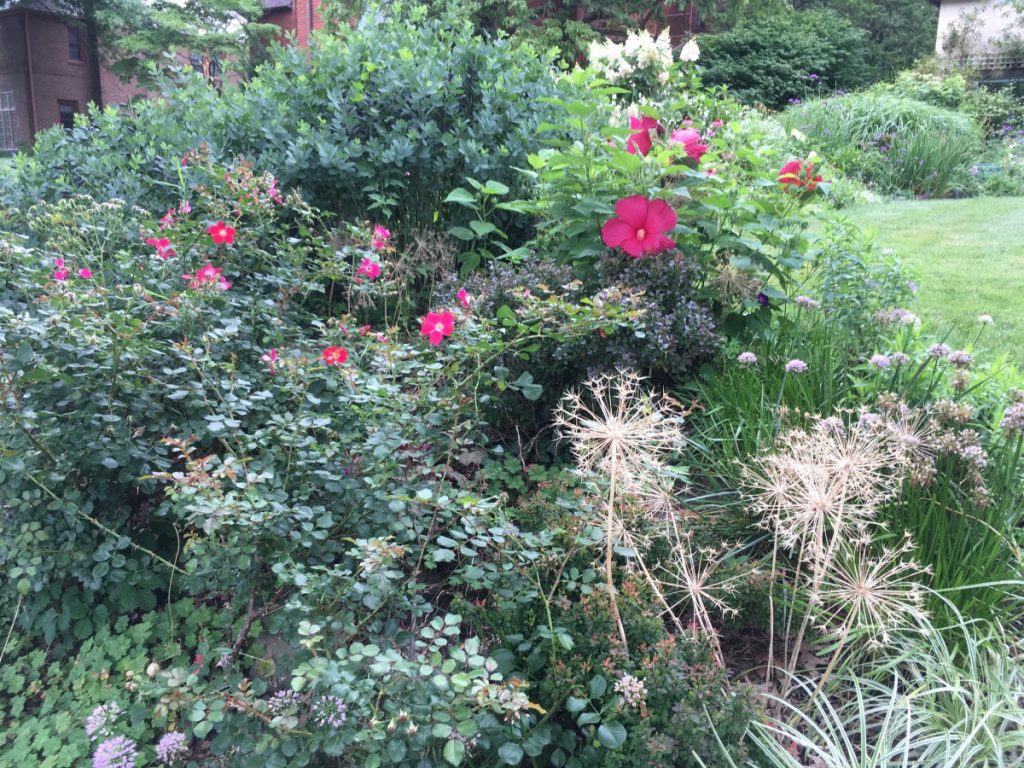
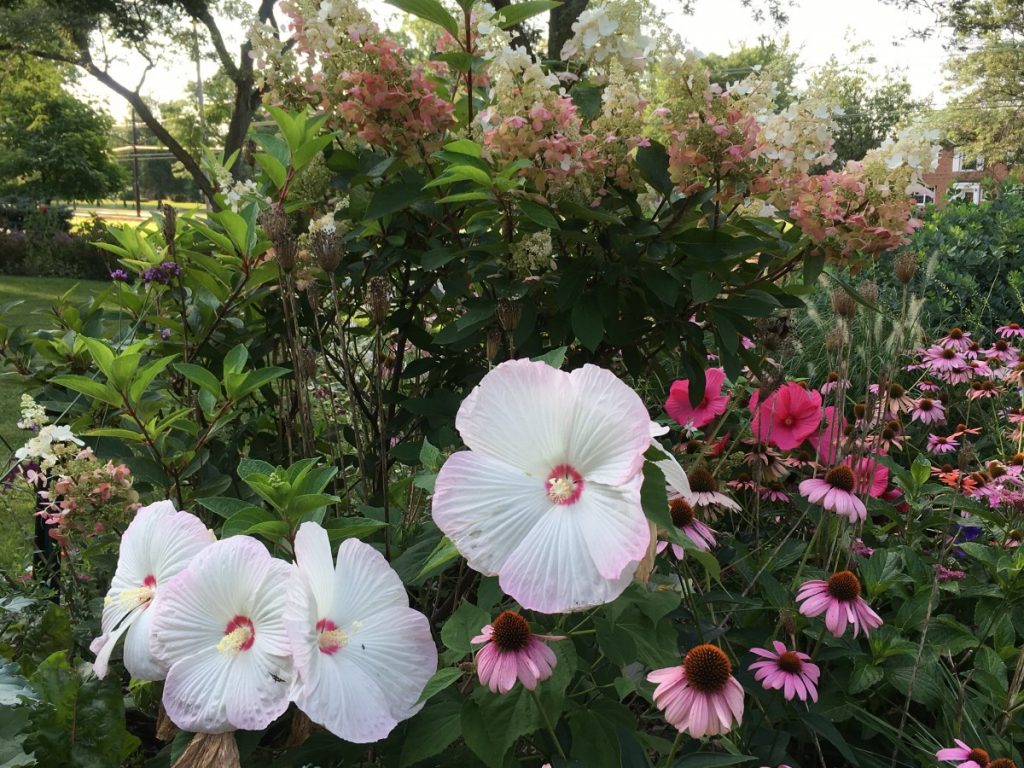
My favorite is the perennial because its large flowers make such a splash in the garden. It dies back to the ground each year but when I prune it in the fall, I always leave at least six inches of the stalk. Why? Because it often doesn’t foliate until the end of May. The stalks serve as a reminder that something is planted there and that it is not dead although it may look that way. To counter that empty look, I surround them with spring. Many of the cultivars are four to five feet tall and wide and they are useful at the back of a border. I tend to use the dwarfs (about three feet tall and wide) in my perennial garden designs and in my own garden.

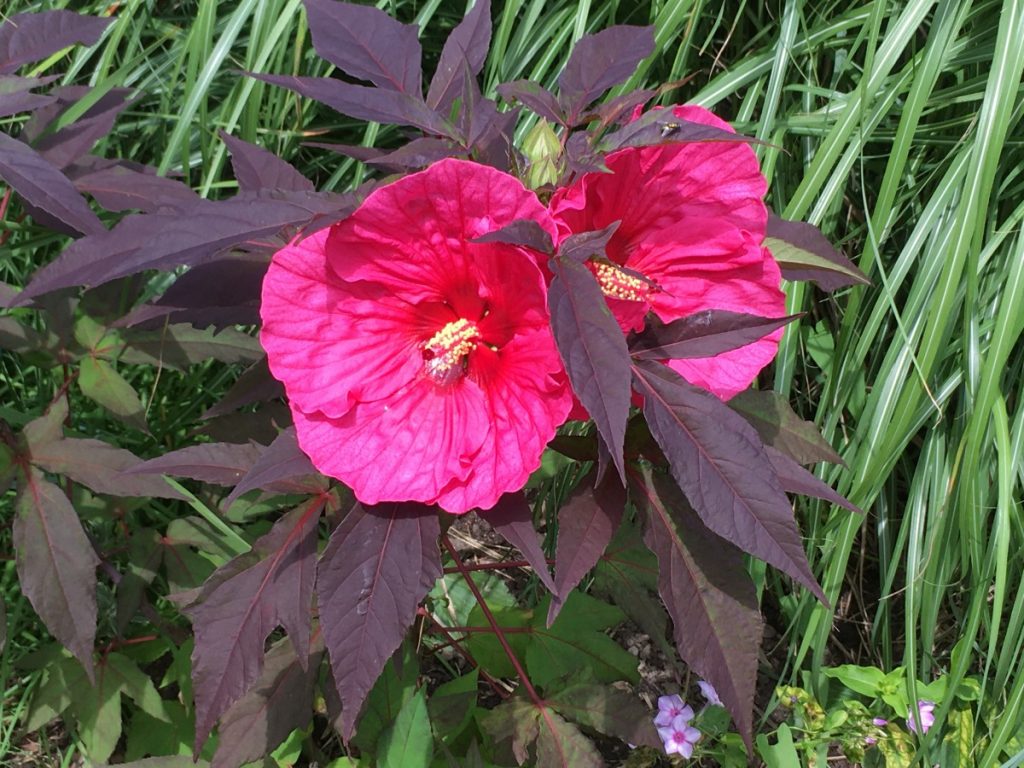
These Hibiscus come in shades of white, pink, and red, with different eye patterns and streaking through the petals. The foliage is usually green but newer cultivars now sport near-black foliage. Two of the most striking are ‘Starry Starry Night’ and Summerific ‘Evening Rose’.
This species needs full sun and regular moisture to bloom and rebloom from mid-July through September and would be an ideal plant for wet areas or rain gardens.
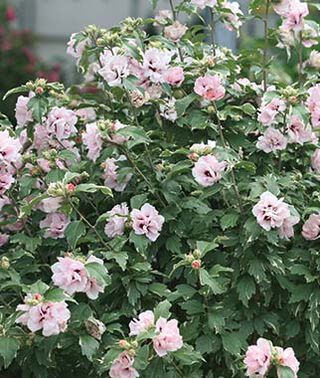
I often despair at the ubiquitous use of Rose of Sharon because it seeds so freely and the seedlings have strong roots. It is quite woody but most homeowners don’t seem to realize that it can be pruned hard in the spring to keep it from becoming a giant (many cultivars grow ten to fifteen feet tall) that overpowers everything else. Happily, there are now some sterile cultivars. ‘Sugar Tip’ has variegated foliage and pale pink flowers while ‘Azurri Blue Satin’ is a lovely shade of blue; both grow only to six feet. This species thrives in either full sun or partial shade and is fairly drought tolerant.
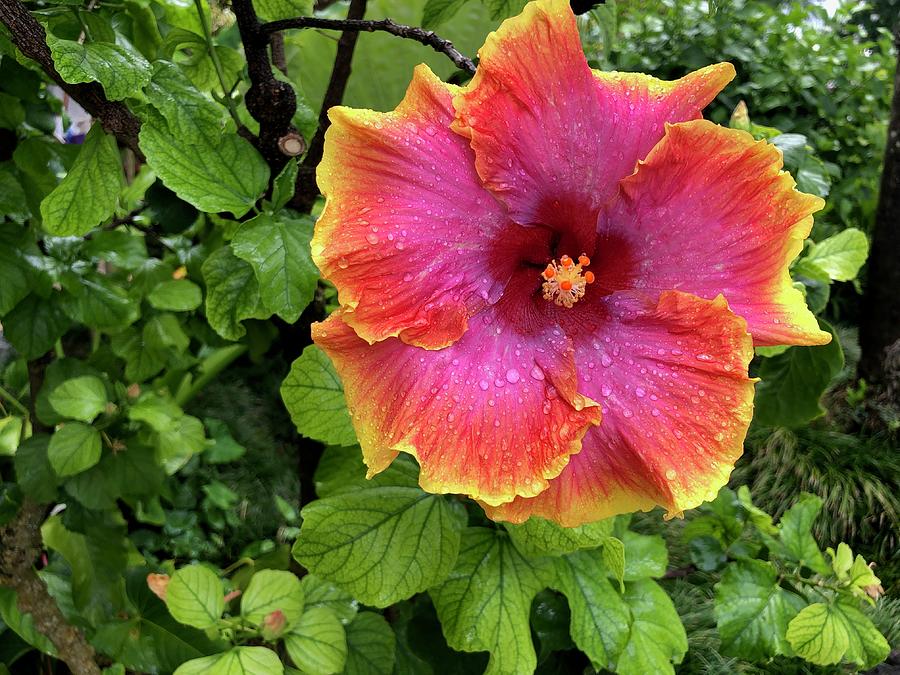
The tropical hibiscus are available in a wide range of colors: orange, yellow, pink, and red. They are woody shrubs that are perfect in containers for the patio or deck. They do need full sun and rebloom best with some moisture.
Chances are there is a Hibiscus that is perfect for you.


0 Comments